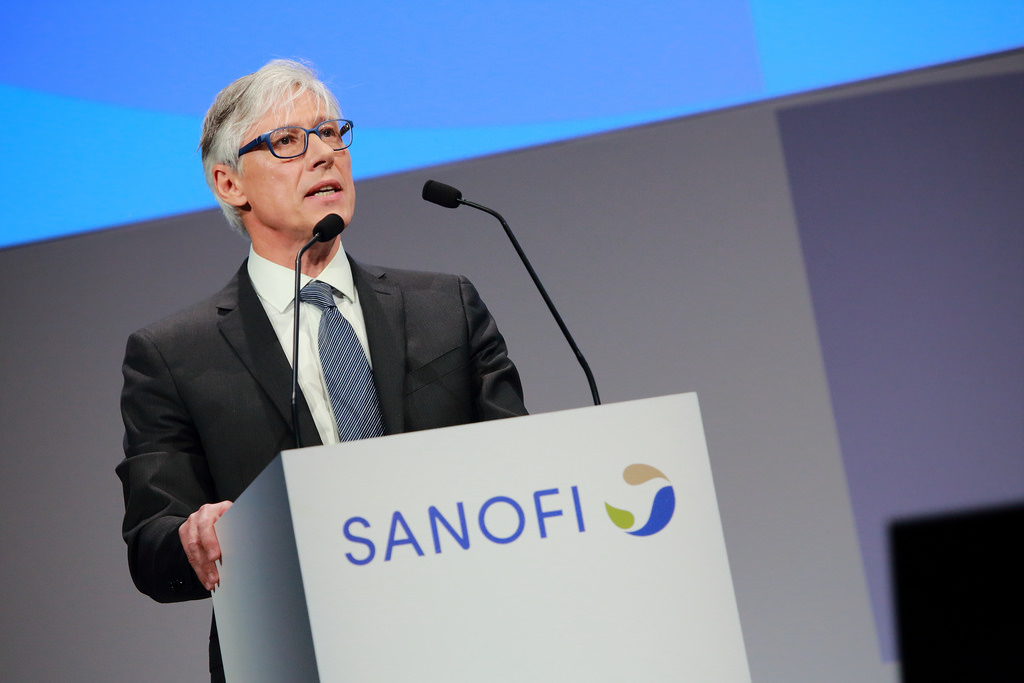Sanofi is reporting positive results in their second pivotal LixiLan Phase III study. LixiLan could provide a treatment option for diabetes patients who are no longer able to remain at their HbA1c target, despite basal insulin treatment.
 Sanofi announced today (September 14, 2015) that the LixiLan-L Phase III clinical trial met its primary endpoint in patients with type 2 diabetes treated with insulin glargine with or without metformin.
Sanofi announced today (September 14, 2015) that the LixiLan-L Phase III clinical trial met its primary endpoint in patients with type 2 diabetes treated with insulin glargine with or without metformin.
The fixed-ratio combination of insulin glargine 100 Units/mL and lixisenatide, a GLP-1 receptor agonist, demonstrated statistically superior reduction in HbA1c (average blood glucose over the previous three months) compared with insulin glargine 100 Units/mL.
Overall, the fixed-ratio combination had a safety profile reflecting those of insulin glargine 100 Units/mL and lixisenatide.
“This study examined an important possible use of this investigational medicine,” said Richard M Bergenstal MD, Executive Director, International Diabetes Center at Park Nicollet, Minneapolis, Minn., U.S. “The result highlights that this could provide a treatment option for the roughly fifty percent of patients who are no longer able to remain at their HbA1c target, despite basal insulin treatment.”
Continue Reading Below ↓↓↓
LixiLan-L investigated the efficacy and safety of the fixed-ratio combination of insulin glargine 100 Units/mL and lixisenatide versus treatment with insulin glargine 100 Units/mL over a 30 week period in 736 patients whose type 2 diabetes was not adequately controlled at screening on basal insulin, alone or combined with one to two oral anti-diabetic agents.
Treatment with metformin, if previously taken, was continued throughout the study. Full results will be communicated in a future scientific forum.
Sanofi previously announced in July 2015 that the LixiLan-O study met its primary objective over a 30 week period in 1,170 patients whose type 2 diabetes was not adequately controlled on metformin alone or on metformin combined with a second oral anti-diabetic agent.
“The Phase III LixiLan-O and LixiLan-L clinical trials were initiated at the beginning of 2014 to explore the safety and efficacy of our investigational fixed-ratio combination when used before and after basal insulin, respectively,” said Elias Zerhouni, MD, President, Global R&D at Sanofi. “These studies reflect Sanofi’s commitment to developing and evaluating medicines intended to meet patient needs throughout their journey with diabetes.”
Regulatory submissions are planned for Q4 2015 in the United States and Q1 2016 in the European Union.
What is Lantus® (insulin glargine injection) 100 Units/mL?
Prescription Lantus is a long-acting insulin used to treat adults with type 2 diabetes and adults and pediatric patients (children 6 years and older) with type 1 diabetes for the control of high blood sugar.
Do not use Lantus to treat diabetic ketoacidosis.
Important Safety Information For Lantus (insulin glargine injection) 100 Units/mL
Do not take Lantus during episodes of low blood sugar or if you are allergic to insulin or any of the inactive ingredients in Lantus.
Continue Reading Below ↓↓↓
Do not share needles, insulin pens, or syringes with others. Do NOT reuse needles.
Before starting Lantus, tell your doctor about all your medical conditions, including if you have liver or kidney problems, if you are pregnant or planning to become pregnant or if you are breast-feeding or planning to breast-feed.
Heart failure can occur if you are taking insulin together with certain medicines called TZDs (thiazolidinediones), even if you have never had heart failure or other heart problems. If you already have heart failure, it may get worse while you take TZDs with Lantus. Your treatment with TZDs and Lantus® may need to be changed or stopped by your doctor if you have new or worsening heart failure. Tell your doctor if you have any new or worsening symptoms of heart failure, including:
- Shortness of breath
- Sudden weight gain
- Swelling of your ankles or feet
Tell your doctor about all the medications you take, including OTC medicines, vitamins, and supplements, including herbal supplements.
Lantus should be taken once a day at the same time every day. Test your blood sugar levels while using insulin, such as Lantus. Do not make any changes to your dose or type of insulin without talking to your healthcare provider. Any change of insulin should be made cautiously and only under medical supervision.
Do NOT dilute or mix Lantus with any other insulin or solution. It will not work as intended and you may lose blood sugar control, which could be serious. Lantus must only be used if the solution is clear and colorless with no particles visible. Always make sure you have the correct insulin before each injection.
While using Lantus, do not drive or operate heavy machinery until you know how Lantus® affects you. You should not drink alcohol or use other medicines that contain alcohol.
The most common side effect of insulin, including Lantus, is low blood sugar (hypoglycemia), which may be serious and life threatening. It may cause harm to your heart or brain. Symptoms of serious low blood sugar may include shaking, sweating, fast heartbeat, and blurred vision.
Lantus may cause serious side effects that can lead to death, such as severe allergic reactions. Get medical help right away if you have:
- A rash over your whole body
- Swelling of your face, tongue, or throat
- Trouble breathing
- Shortness of breath
- A fast heartbeat
- Extreme drowsiness, dizziness, or confusion
- Sweating
Other possible side effects may include swelling, weight gain, low potassium levels, injection site reactions, including changes in fat tissue at the injection site, and allergic reactions.
Please see full prescribing information for Lantus.
About Lixisenatide
Lixisenatide is a once-daily prandial glucagon-like peptide-1 receptor agonist (GLP-1 RA) for the treatment of adult patients with type 2 diabetes mellitus. GLP-1 is a naturally-occurring peptide hormone that is released within minutes after eating a meal. It is known to suppress glucagon secretion from pancreatic alpha cells and stimulate glucose-dependent insulin secretion by pancreatic beta cells.
Lixisenatide was in-licensed from Zealand Pharma A/S (NASDAQ OMX Copenhagen: ZEAL), and was approved in Europe in 2013 for the treatment of adults with type 2 diabetes mellitus to achieve glycemic control in combination with oral glucose-lowering medicinal products and/or basal insulin when these, together with diet and exercise, do not provide adequate glycemic control. Lixisenatide is currently approved in over 60 countries worldwide for the treatment of adults with type 2 diabetes, with commercial launches in most EU countries, Japan, Brazil, Mexico and other markets. Lixisenatide is an investigational product in the U.S. It was resubmitted to the Food & Drug Administration (FDA) in the third quarter of 2015.
Source: Sanofi










